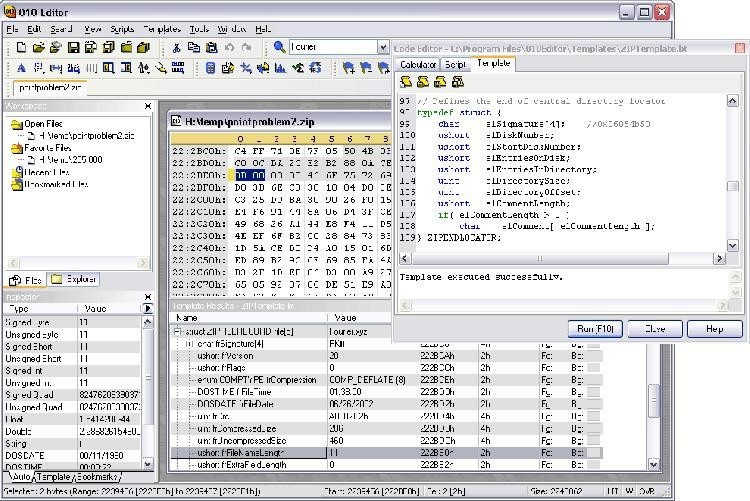
So I guess there are no more changes to make, and I decide to tryout my modified. It runs without errors, and the result looks good. But what I do as an extra check is: save the modified file and run the template again. class file, like other length fields … I don’t know. Maybe there are more changes to make to the internal structure of this. So I have changed the constant string I wanted to change. I have to make sure that the editor is in insert mode (INS), so that when I type characters, they are inserted at the cursor, in stead of overwriting existing bytes: Next I need to add a character to the string. Since I want to add 1 character, I change the length from 14 to 15: I can do that inside the template results by double-clicking the value 14, I don’t need to make that change inside the hexdump: The length is 14, that’s indeed the length of the string I want to extend. It’s not only the string, but also bytes that represent the tag and length. From that I gather that the string I want to modify is inside a pool of constants.Īnd here I can see which bytes inside the. So my cursor was on the 10th byte (bytes) of the string, which is part of template variable cp_info constant_pool. Which selects the corresponding template variable: To find the template result field I need to modify, I position my cursor on the string I want to modify inside the ASCII dump, I right-click and select “Jump To Template Variable”: class template, hoping that the template will make it clear to me what needs to be changed. class files, that why I’m using 010 Editor’s. I’m not familiar with the internal structure of. java files remain valid: for example, if there is something in that structure like a field length, I need to change the field length too. Into something like “1.2 (20210922a)”.ĭoing so will make the string longer, thus I need to add a byte to the file (trivial), but I also need to make sure that the binary structure of. For example, the first field I selected here, u4 magic, is the magic header of a. Under the hex/ascii dump, the template results are displayed: a set of nested fields that match the internal structure of. Here is how you can apply a template manually, in case the file extension is not the original extension:Īnd this is how the template results look like: That’s what I wanted to know: is there a template for. class extension and installed and ran the template for.

When opening the file, 010 Editor recognized the. Here is the file opened inside the editor: Before going the route of decompiling / editing / recompiling, I tried with 010 Editor. class file: extend a string inside that class. It’s a powerful binary editor with scripting and templates. 010 Editor is one of few commercial applications that I use daily.


 0 kommentar(er)
0 kommentar(er)
